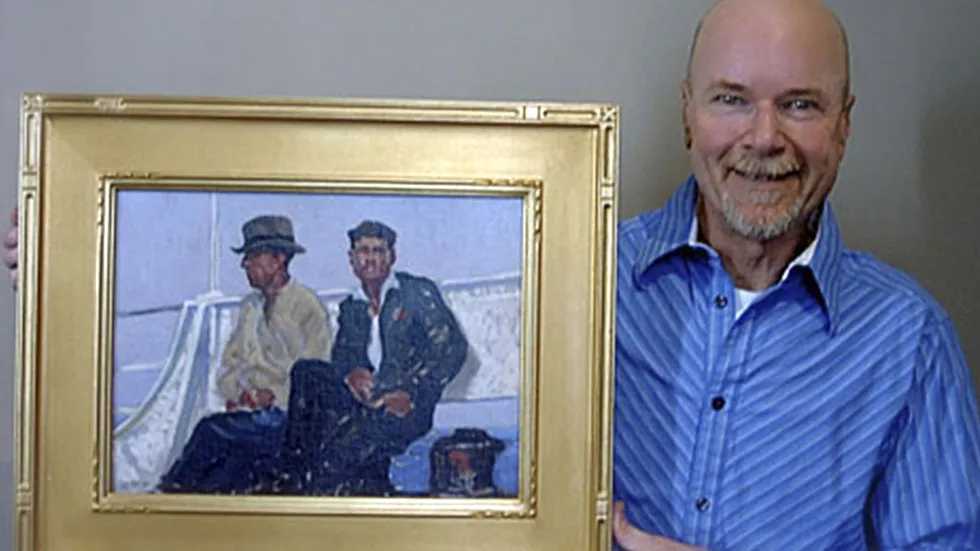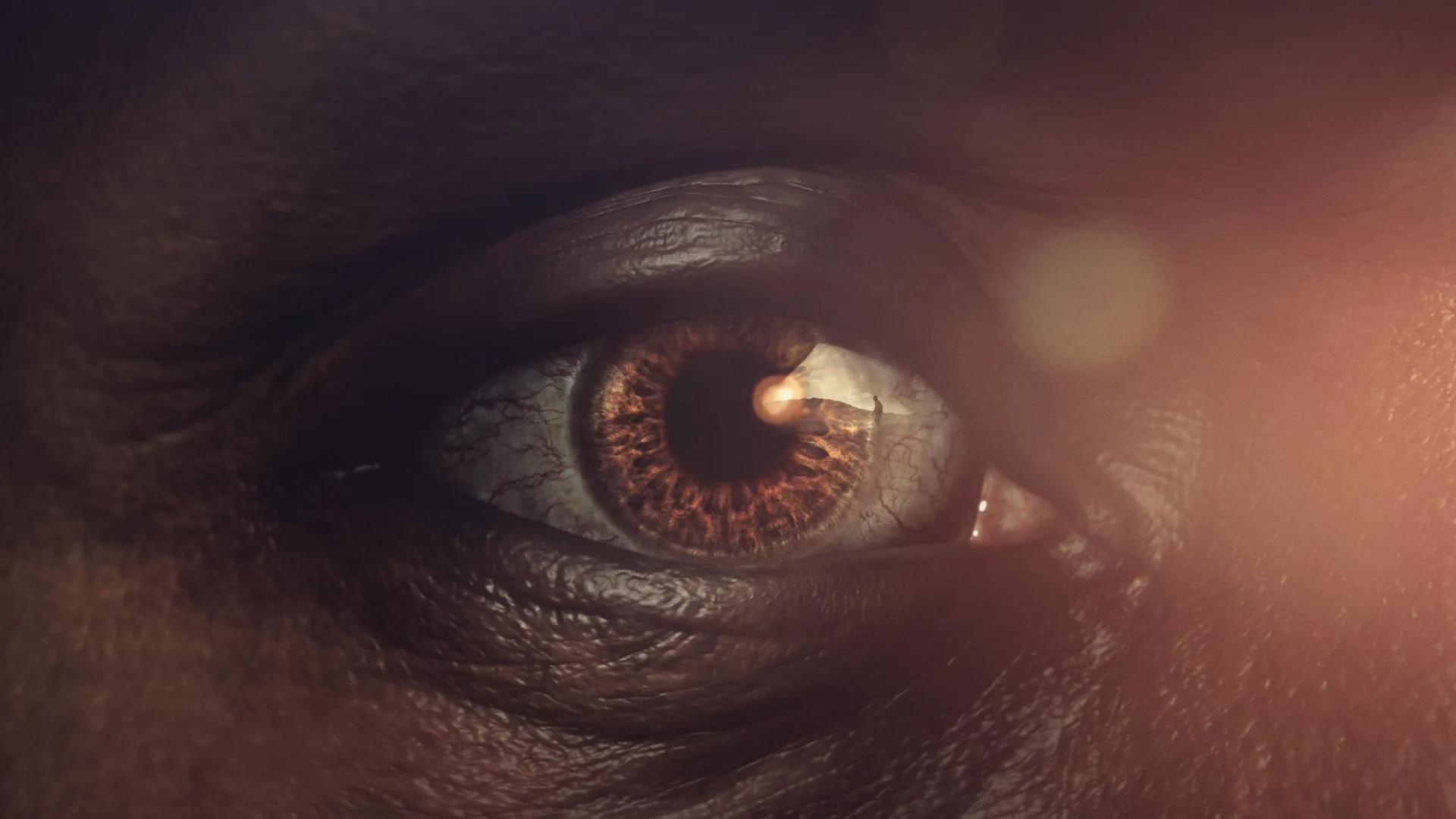Stolen Paintings Update
An update on Jim McCarty's quest to recover some of his most beloved stolen paintings.

By scouring art galleries, auctions, and the Internet, to date Jim McCarty has been able to recover about 12 of the almost 60 plein air paintings that were stolen, including this one, Two Men at Sea, by Warren Chase Merritt.
Mar 7, 2011
BY Ben Phelan
Check out the previous article.
In 2002, Jim McCarty's entire collection of paintings was stolen from a storage unit. He was heartbroken. He'd collected many of the paintings with a partner who'd passed away in 1995, so the emotional value of the stolen works was tremendous — far in excess of their monetary value. ANTIQUES ROADSHOW learned about McCarty's plight and interviewed him in 2008 for a Palm Springs episode that first aired in January 2009. At the time of the interview McCarty had already spent six years scouring galleries, collections, and museums up and down the West Coast in search of his stolen paintings, and had recovered a few of them. He was hopeful that his television appearance might flush out the thieves, or at least prompt anyone who may have unwittingly bought one of his stolen paintings to get in touch with him and return it. In particular, McCarty was interested in recovering four paintings: Mt. San Jacinto with Blooming Yucca and California Coastal Landscape, both by George Bickerstaff; Athlete/Scholar/Musician, by Anna Cutler Webster; and Two Men at Sea, by Warren Chase Merritt.
A stolen-paintings paradox: "The person with the painting didn't steal it, and the person who wants it doesn't own it"
MT. SAN JACINTO — PALM SPRINGS
Oil, by George Bickerstaff. 30" x 24".
Recovered: Two Men at Sea
Within days of the 2009 broadcast, McCarty received a phone call from a television writer who had bought Two Men at Sea from a dealer he'd used and trusted for years, and who was horrified to learn of the painting's illicit provenance. To McCarty's delight, the writer, who wishes to remain anonymous, agreed to return the painting, no questions asked.
"We spoke on the phone," says McCarty, "and he told me he'd been watching ANTIQUES ROADSHOW with his daughter. When Two Men at Sea came up on the screen, he leaned over to his daughter and said, 'Sweetheart, we're going to make somebody really happy today.' Within days, I had the painting back in my possession. It was the best I could have hoped for."

In 2009, Jim McCarty was contacted by a Peter W. in Los Angeles, who claimed he had bought this Anna Cutler Webster painting from a dealer unwittingly and was willing to return it, but the lead ultimately went cold and the painting has not been returned.
Athlete/Scholar/Musician: A Lead Goes Cold
Soon afterward, McCarty received an email from a second collector, a Peter W., who lived in Los Angeles. "Much to my shock and dismay," Peter wrote, "I learned that a painting I purchased nearly five years ago is one of your stolen paintings: the Anna Cutler Webster painting of which you are particularly fond." Peter went on to express his regret that he would have to part with a painting that he, too, had come to love. He was particularly anxious about the money he stood to lose if his dealer refused to reimburse him for having sold stolen property. Peter requested proof of McCarty's ownership, saying he would return the painting upon receiving documentation.
McCarty delivered extensive documentation, but Peter equivocated. The dealer who had sold Peter the painting had vanished and it was becoming clear to Peter that, despite the 10 percent reward McCarty was offering, he was going to lose money on the dodgy deal, having paid $2,100 for the painting. Peter stopped responding to emails and never returned Athlete/Scholar/Musician. McCarty is considering legal action against Peter.
Bickerstaff Disappointments
The remaining "most wanted" paintings were two by the Californian landscape painter George Bickerstaff. After receiving a phone call from Palm Springs that same winter of 2009, McCarty thought he'd hit the jackpot.
"I got a call from the Palm Springs police department," says McCarty. "They said a woman in San Diego had called, saying she owned both of them." Palm Springs offered their help in facilitating the return of McCarty's property. McCarty was thrilled, but there was a hitch: The theft had not occurred in Palm Springs, but rather in nearby Cathedral City. In order to proceed with reclaiming the two Bickerstaff paintings, McCarty would have to go through the police department in the jurisdiction where the crime had occurred. Palm Springs therefore could not assist in recovering the paintings, and contacted the San Diego woman, telling her to call the Cathedral City police department if she wished to return the paintings. That was the last McCarty heard from her. Like Peter W., the San Diego woman, despite seemingly good intentions at first, broke off contact and decided to remain in possession of the stolen artwork.
To date, McCarty has recovered about a dozen of the nearly 100 paintings he lost — not a bad result, perhaps, considering he has done all the detective work himself, but the pain of the loss is still fresh.
"It's heartbreaking for me," he says. "Each painting has a story behind it. My insurance company can't believe I try to track them down in my spare time, but [the paintings] have lots of memories attached to them. It's frustrating. It's hard for me to even open up the paperwork because I immediately get so depressed."
From the perspective of the insurance companies who underwrite art collections, McCarty's case is unusual: Most policyholders who are victims of theft usually cash the check from their insurer, give up hope of recovering their stolen property, and move on with their lives. The same can be said of the insurance companies. Once they are satisfied that a theft has indeed occurred, they pay their policyholder and close the file. In so doing, the insurer becomes the owner of the stolen artwork, but unless the artwork is exceptionally valuable, they tend not to pursue recovery. As McCarty has tracked down his paintings, as per the terms of his policy, he has returned them to his insurer, from whom he immediately bought them back at their appraised value.
There is little that the Cathedral City Police feel empowered to do. On the one hand, McCarty is not technically the owner of the paintings he is seeking to have returned; and on the other, the insurance company to whom the paintings belong don't wish to pursue the matter.
"Any police department would encourage the parties to resolve it in court," Sergeant Dave Hatfield of the Cathedral City Police Department said recently. "We can't become an agent of reconciliation — the person with the painting didn't steal it, and the person who wants it doesn't own it."
Yet McCarty knows his paintings are out there somewhere, hanging in galleries and on the walls of collectors who themselves have likely done nothing illegal. By now, it's a certainty that some of the paintings have found their way across the country, if not overseas. Almost 10 years after the theft took place, the odds are against him, but McCarty keeps looking.
You Can Help
If you should have information regarding any of Jim McCarty's stolen paintings, which can be viewed at https://www.flickr.com/photos/93077197@N06/. Mr. McCarty will happily pay a reward for the return of any of his lost paintings, or for information leading to the apprehension of the thief.

Carmel Coastline, by George Bickerstaff, is one of two treasured paintings by that artist that McCarty has yet to recover, despite having come tantalizingly close.
Ben Phelan is a freelance writer in Louisville, Kentucky. He has been a contributor to ANTIQUES ROADSHOW Online since 2007.







